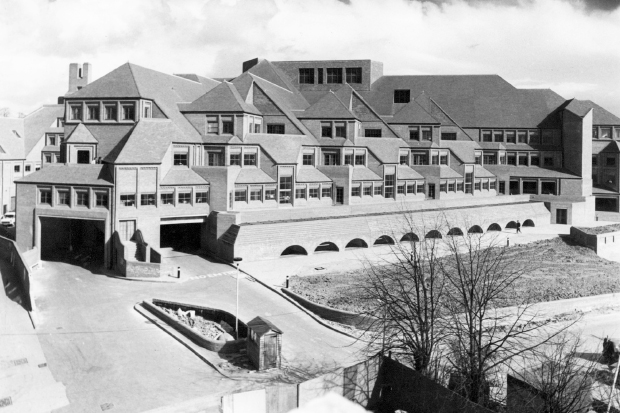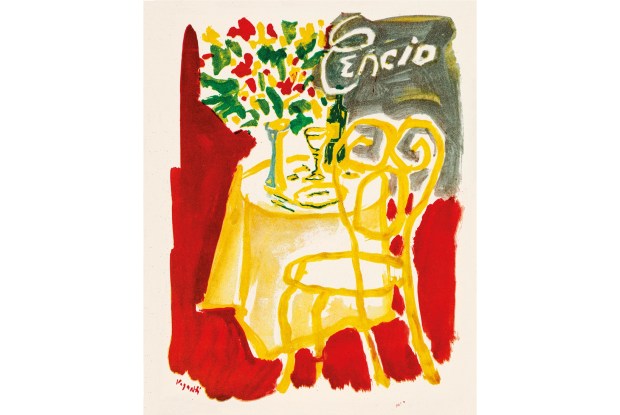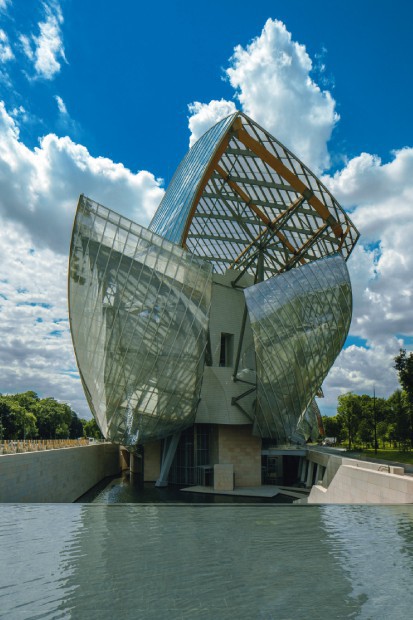In any epoch most of what is built is mediocre, though we may not realise it at the time because our neophilia persuades us of merit where there is none. Equally, we may fail to distinguish the few exceptions — those instances where architects and builders have ascended to a higher standard of mediocrity or have even escaped its dulling clasp. It takes time for public taste to catch up with architects’ taste. Today, 40 years after brutalism dissipated in an assault of bien-pensant hostility and oil crises, few weeks pass without a new book or blog hymning its sublimity, energy and gravity. It is, of course, all a bit late. Much of the finest work has already been destroyed.
It will, no doubt, soon be the turn of postmodern buildings to feel the rough buss of the wrecker’s ball. Many are, after all, more than 30 years old — that is to say that by current standards they are in their dotage. The Twentieth Century Society has worked tirelessly to protect unsung concrete tours de force. It is now attempting to get its retaliation in first by holding a conference that will draw attention to the best of postmodernism and to the threat it faces from philistine local councillors, vandal developers, their chums in the demolition community and, of course, architects — for whom a pile of not very old rubble is a site to build on. Best of postmodernism: is that an oxymoron? I think not. Few ages produce nothing of note and the two decades between the resignation of Harold Wilson and the advent of New Labour are no exception.
Late modernism, of which brutalism was merely the most extreme strain, was far from homogeneous but it was, in all its versions, infected with high seriousness, even earnestness, and it had become the architecture of the establishment: hospitals, the new universities, Vatican II churches. Postmodernism was a brutal reaction: the often conflicting moral and aesthetic orthodoxies that architects had, for half a century, treated as holy writ were cast aside. Demob happy former modernists who let their hair down and jumped on the postmodern bandwagon (Gaudy! Bright! Loud! Fun!) were condemned as apostates by their more pious peers. Andrew Derbyshire, architect of York University, was calumnised for having abandoned the true faith when he designed Hillingdon Civic Centre, an exercise that shows what happens when a couple of dozen redbrick bungalows clumsily bugger each other. Architectural magazines and newspapers took sides. Heads rolled. Certain writers were declared persona non grata. It was all unwittingly hilarious and delightfully pompous.
The taxonomically inclined critic Charles Jencks was tireless in his promotion of the exciting new idiom’s tics and mannerisms: ‘quotes’ from the dressing-up box of history; allusions to pop art; ‘irony’ (which had little to do with irony); randomly applied lumps of pediment; upside-down Diocletian windows; cod classical orders; asymmetry wherever possible; multiple and clashing materials; neo-Victorian ‘features’. The noisy indiscriminacy was analogous to sentences in which each word belongs not merely to a different language but to a different writing system: pictogram, alphabet, hieroglyph were piled on top of each other. The lack of constraints, the eagerness to please the visually untutored, the children’s entertainer populism might have been devised as the architecturally representative characteristics of Mrs Thatcher’s Manchester Liberalism and of Reaganomics.
But perhaps not too much should be made of this: architecture is seldom exclusive to one ideology. François Mitterrand, hardly devoted to the primacy of the market, was probably the single most powerful patron of postmodernism. His commissions amply illustrate both the stylistic and qualitative variety that are gathered under the postmodern handle. They range from the Opéra Bastille’s effortfully counterintuitive asymmetries to the breathtaking gigantism of Ricardo Bofill’s classicism in, inter alia, Montparnasse and Cergy-Pontoise. Bofill, no more or less of a megalomaniac than any other globally recognised architect, declared his enthusiasm to work in England on condition that he could design an entire town and replace the National Gallery with a completely new building. England declined this offer, regrettably.
Instead that gallery, at least a storey too low for its site, got an embarrassingly feeble extension by Robert Venturi, a banal architect, way out of his depth, but an interesting and often eye-opening theorist who more or less defined postmodernism’s precursors — a hitherto unfashionable and aptly eclectic galère: all sorts of baroque, late Le Corbusier, Armando Brasini, the diner kitsch of American highways, the more extreme end of the shingle style, Las Vegas’s neon and Lutyens (who had, according to the ineffable modernists Alison and Peter Smithson, ‘perverted the course of modern English architecture’). Venturi militated against the simplifications and minimalism of Miesian modernism. He rehabilitated retrospection, ‘historicism’, the once wicked practice of pastiche and wall-to-wall impurity.
One’s ears began to get mugged by the word ‘ludic’. Playfulness was all around. But how playful was it? There’s an awful lot of hurt in the nursery. Architectural ‘jokes’ seldom work. They don’t make a gracious exit. They are stuck there, perennially, in stock brick or finest sodalite, repeating themselves over and over, like those gargoyles that must have been a hoot when a gothic cathedral was being built and carvers of rainheads represented each other as grotesques, but which are pointless once their subjects are forgotten.
The best English work, that which should at all costs be preserved, doesn’t do jokes. Instead it possesses a sprightly wit — which is different. The undoubted masters of the idiom were Jeremy Dixon, Terry Farrell and Piers Gough of the partnership CZWG.
The MI6 building in Lambeth and Charing Cross station are exuberant or boorish according to taste. They are certainly unmissable. Farrell’s aggression is a sort of trademark. London would be poorer without it.
Dixon’s houses in St Mark’s Road in Notting Dale are as fresh and surprising today as they were 40 years ago. Here was a template that combined the 19th-century terrace with decoration derived from De Stijl. They have been widely imitated. Indeed they are still widely imitated — Docklands passim.
Gough described his work as ‘B-movie architecture’, which gets it precisely when one recalls that the second feature was frequently superior to the main attraction. He designed England’s most famous public lavatory, in Westbourne Grove, as a shrine to Joe Orton. His early masterpiece was in the then hardly ‘regenerated’ warehouse area of Bermondsey: the Circle comprises apartment blocks strikingly and overwhelmingly tiled in International Klein Blue. In its centre stands a life-size sculpture of a horse by Shirley Pace, which recalls the creature that wanders dreamily through La Strada. There is no school of Gough. His work is quirky to the point that it resists imitation.
Sorting the many ectypes from the few prototypes should provide the Twentieth Century Society with hours of pleasurable industry, though the pertinence of such triage is moot given that the strange -ism under scrutiny revelled in gleefully announced thefts. Originality was not the point.
Got something to add? Join the discussion and comment below.
Get 10 issues for just $10
Subscribe to The Spectator Australia today for the next 10 magazine issues, plus full online access, for just $10.
The Twentieth Century Society’s Postmodernism Conference is on 21 May at the University of Westminster’s School of Architecture, London. Jonathan Meades's new documentary about Mussolini and architecture, Benbuilding, is on BBC4, 1 June, at 9 p.m.
You might disagree with half of it, but you’ll enjoy reading all of it. Try your first month for free, then just $2 a week for the remainder of your first year.














Comments
Don't miss out
Join the conversation with other Spectator Australia readers. Subscribe to leave a comment.
SUBSCRIBEAlready a subscriber? Log in